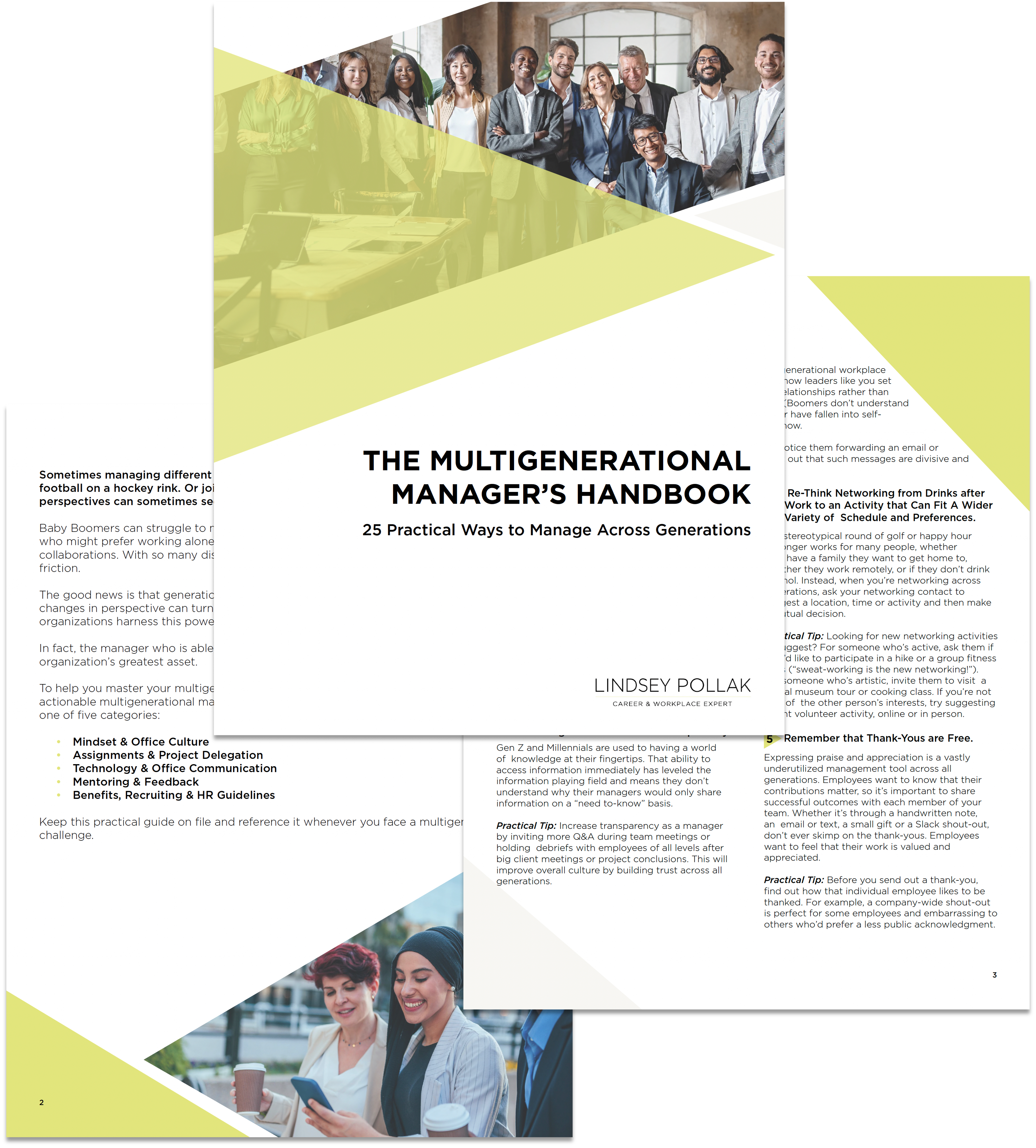One of the things Millennials thrive on in the workplace is feedback — and lots of it. They like to know where they stand and what their managers think about their performance and progress. But providing feedback can sometimes be difficult and may not be a manager’s top priority. Still, it’s essential to learn to deliver effective feedback well and make time to do so frequently if you want to engage your Millennial employees and motivate them to do their best work.
I’ve found some recent articles that can help leaders make the most of opportunities to provide feedback and keep their Millennials — and all their employees — engaged.
- Revamp Your Approach to Monthly One-to-One Meetings. Entrepreneur: “Monthly one-on-one meetings should be mandatory and nonnegotiable. Even if an emergency crops up on the day of a one-on-one, managers should immediately reschedule the meeting. When you make regular monthly meetings a priority, your employees will see that you care about their growth and development, and they’ll begin to perceive those meetings as extremely important, as well. To make monthly one-on-ones more effective, frame them as vehicles to develop and improve employee performance rather than just as a time to run down a list of items and observations. In addition to outlining specific scenarios where things went well (or not), you’ll also discuss goals and growth plans for each team member. You’ll get a lot more from employees if you show a genuine interest in helping them achieve their long-term goals.”
- How to Give Feedback to the People Who Take it the Worst. Mashable: “An employee who cries or huffs and puffs when told that he did something wrong isn’t just an unfortunate stereotype, it really happens. I know I’ve experienced being so invested in a project — an attribute which is usually laudable — that I couldn’t help but let out a few tears when told my work wasn’t up to par. Your first step is to assess whether this response is routine or out of the ordinary. If an employee who usually takes feedback in stride looks a bit teary, odds are there is something else going on. The best thing to do here — if at all possible — is to table the discussion for another time. A simple, ‘It seems like you’re having a tough day, how about we check in tomorrow?’ gives your employee the breathing room she needs. It also opens the door for her to share what is going on if she’d like.”
- Behold The Entrenched — And Reviled — Annual Review. NPR: “Nearly 90 percent of companies do formal evaluations at least once a year, according to a report last week from the Society for Human Resource Management. But a majority also give them low marks for effectiveness. John Hagel III, co-chair of a research arm of Deloitte that looks at emerging management trends, says these days, American companies need something different, such as a system that rewards the contributions of what he calls ‘passionate’ workers. These are very engaged people willing to try novel things and risk failure.”
- 5 Ways to Make the Most of One-on-One Meetings. PayScale: “Ian McAllister, a general manager at Amazon…Check in with yourself. Another tip from Ian is to use the meeting to find out how you’re doing as a manager. It’s critical to remember this meeting is not just about you or just about your employee, but about your relationship. Getting feedback this way rather than once a year can help you — as a manager — make critical improvements so you won’t be surprised during your own performance review.”
- True Employee Engagement Requires An Employee Feedback Loop. Forbes: “David Niu says that no matter the industry, country or size of a company, most of the entrepreneurs to whom he spoke said they were unsettled when employees quit out of the blue. This raised questions of whether other employees were unhappy, or whether the leaders had only the vaguest sense of how their workforce perceived the company. This sort of negative surprise comes when firms lose touch with their employees, or when their idea of employee feedback is an annual survey that takes six months to ‘process’, and then climaxes with senior leadership saying something like: here are the three things we took away from last year’s survey.”
Want to know more about how to create a workplace where Millennials will thrive? Download my white paper:
